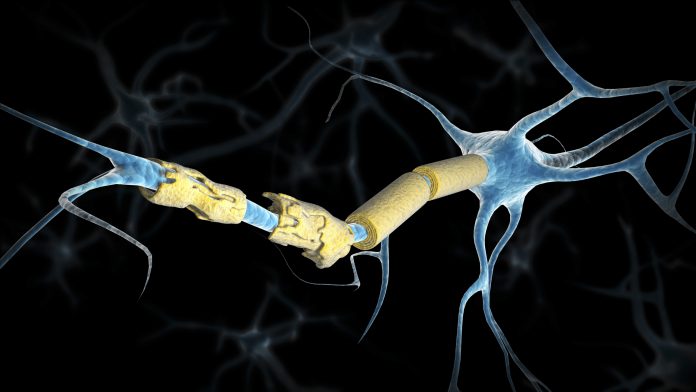
Treatment of multiple sclerosis (MS) has made significant strides in recent years, but many of the approved medications to treat it carry a “Black Box Warning” about a potentially fatal complication, a rare brain infection called progressive multifocal leukoencephalopathy (PML). Based on recent research that has identified a strong link between four genetic mutations and PML, leading MS experts have recommended genetic screening to identify those patients at higher risk of developing this side effect.
In a commentary published in the journal Frontiers in Neurology, Joseph Berger, MD, and Hans-Perter Hartung, MD, wrote “The availability of a simple, relatively inexpensive test that can identify the genes that put one at risk for PML would be enormously helpful in the management of patients. The widespread use of such testing could potentially allow the physician to use alternative therapies that do not carry the same risk of PML.”
Berger is MS division chief at the University of Pennsylvania Perelman School of Medicine and Hartung is Neurology chair of Heinrich Heine University in Düsseldorf, Germany and a Specialty Chief Editor for Frontiers in Neurology.
PML is caused by the JC virus, a common virus which remains dormant in the vast majority of people who carry it. But as more and more immune-modifying drugs are developed and approved for a range of diseases including MS, many of them have been found to induce the development of PML in rare instances.
Many approved drugs for MS carry a “Black Box Warning” for PML including Tysabri, Ocrevus, and Rituxan, as well as Gilenya, Kesimpta, Mavenclad, Mayzent, Ponvory, and Tecfidera. Drugs that treat other diseases such as autoimmune diseases like inflammatory bowel disease, lupus, and rheumatoid arthritis also include PML warning labels.
“Preventative screening for these variants should become part of the standard of care,” said , MD, Lawrence Steinman is a professor of Neurology and Neurological Sciences, Pediatrics, and Genetics at Stanford University, whose lab developed Tysabri.
The four identified genes, LY9, STXBP2, C8B, and FCN2 are all active in immune mechanisms in the body including viral defense mechanisms. Citing the original study “Progressive multifocal leukoencephalopathy genetic risk variants for pharmacovigilance of immunosuppressant therapies,” of natalizumab (Tysabri) Berger and Hartung noted that “The presence of any one of the four variants was observed in 10.9% of the drug-exposed PML cases vs. only 1.4% of the drug-exposed controls. When drug-associated patients with PML were compared to drug-exposed matched controls, the risk of PML with any one of these variants was exceptionally high (p-value 3.50 E-06, OR = 8.7 (3.7–20.6).”
The findings, they noted, are not surprising considering the strong adaptation of the immune system to infection, which confers either vulnerability or resistance to specific pathogens. Illness and its severity is a combination of the effects of infection by a pathogen and the resulting host response to it.
Bergen and Hartung said that testing for the four genes implicated in PML will not eliminate the risk of a patient developing it but can be a helpful tool to help physicians identify the less than 10% of patients that may be at high risk of occurrence, if treated with drugs that can activate PML.
“The availability of a simple, relatively inexpensive test that can identify the genes that put one at risk for PML would be enormously helpful in the management of patients. The widespread use of such testing could potentially allow the physician to use alternative therapies that do not carry the same risk of PML, such as using alternative therapies for MS rather than using natalizumab in the JCV-positive individual,” they concluded.











